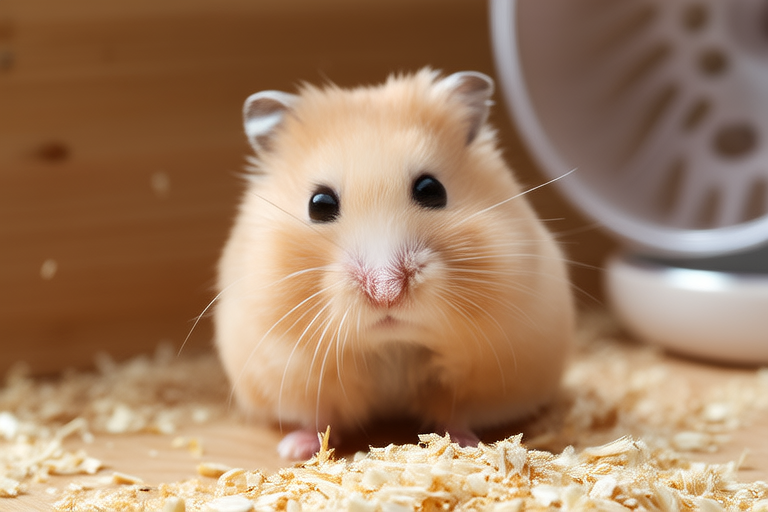Hamster Care: Myths vs Reality
Welcome to the world of hamster care! These small, lovable creatures have become popular pets for many reasons. However, there are numerous misconceptions surrounding their care that can lead to improper handling and living conditions. This article aims to debunk some of the most common myths about hamster care and provide accurate information based on scientific facts.
Myth 1: Hamsters Only Need a Small Cage
One of the most widespread myths is that hamsters only require a tiny cage because they sleep during the day and are active at night. While it’s true that hamsters are nocturnal, they still need ample space to move around and stay physically fit. A small cage can lead to obesity and behavioral issues due to lack of exercise.
Reality: The minimum recommended cage size for a Syrian hamster is approximately 80 cm x 40 cm (32 inches x 16 inches), while dwarf hamsters need at least 70 cm x 40 cm (28 inches x 16 inches). Providing adequate space encourages natural behaviors like running, climbing, and digging. Additionally, a spacious habitat reduces stress and promotes overall well-being.
Myth 2: Hamsters Can Share a Cage
Another misconception is that multiple hamsters can coexist peacefully in one enclosure. In reality, this practice often leads to aggressive behavior and injuries.
Reality: Hamsters are solitary animals by nature and prefer living alone. Introducing another hamster into their territory can trigger territorial instincts, resulting in fights or even death. Each hamster requires its own cage to ensure safety and comfort. If you wish to keep more than one hamster, separate cages are necessary.
Myth 3: Hamsters Thrive on a Diet of Seeds and Nuts
Many people believe that feeding their pet hamsters seeds and nuts is sufficient for their nutritional needs. While these foods are tasty treats, they lack essential nutrients required for optimal health.
Reality: A balanced diet for hamsters includes high-quality commercial pellets formulated specifically for them, along with fresh vegetables and fruits. Avoid feeding too many seeds or nuts as they are high in fat and sugar. Instead, offer small portions of safe greens like carrots, broccoli, and leafy greens. Consult your veterinarian for advice on proper nutrition tailored to your specific type of hamster.
Myth 4: Hamsters Don’t Require Exercise Outside Their Cages
Some owners assume that since hamsters spend much of their time inside their enclosures, they don’t need additional exercise opportunities. This belief overlooks the importance of physical activity for maintaining good health.
Reality: Regular exercise outside the cage is crucial for preventing obesity and keeping muscles strong. Provide an exercise wheel specifically designed for your hamster’s size; avoid wheels with metal bars as they may cause injuries. Allow supervised playtime daily within a safe environment free from hazards like electrical cords or toxic plants. Encourage exploration through tunnels, tubes, and other enrichment items.
Myth 5: Hamsters Are Low-Maintenance Pets
It’s commonly thought that caring for a hamster involves minimal effort compared to larger pets. While hamsters do not demand constant attention, they still require regular maintenance and care to thrive.
Reality: Proper hamster care includes daily cleaning of the cage, monitoring food and water supply, checking for signs of illness, and providing mental stimulation. Neglecting any aspect could result in poor health outcomes. Regular veterinary checkups are also important, especially if you notice changes in behavior or appearance.
Tips for Maintaining a Healthy and Happy Hamster
- Proper Housing: Ensure your hamster has enough room to move freely without feeling cramped. Clean bedding regularly and maintain appropriate temperature levels.
- Nutritious Diet: Feed a variety of foods including commercial pellets, fresh veggies, and occasional fruits. Limit treats containing excessive amounts of sugar or fat.
- Physical Activity: Offer opportunities for exercise both inside and outside the cage. Monitor your hamster closely when playing outside to prevent accidents.
- Health Monitoring: Watch for unusual symptoms such as lethargy, loss of appetite, or abnormal droppings. Promptly seek professional help if you suspect something is wrong.
- Social Interaction: Spend quality time interacting with your hamster daily. Petting, talking softly, and offering gentle handling build trust between you and your pet.
In conclusion, understanding the realities behind common hamster care myths helps ensure that these delightful creatures live long, healthy lives. By providing suitable housing, nutritious diets, ample exercise, and attentive care, you can create an enriching environment where your hamster thrives. Remember, every hamster is unique, so tailor your approach according to individual preferences and needs. With proper knowledge and dedication, owning a hamster can be a rewarding experience filled with joy and companionship.
